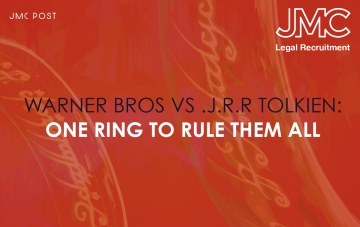What just happened?
What happens to Maiars like Gandalf after the ring of wars arc? Why was Sauron called the Second Dark Lord of Arda (Middle Earth)? How was Arda created, who was Melkor and who were the mighty Valars (the superior maiars created by Eru Illuvatar, the Tolkien god who sang the song that created the Elves and Mankind). The questions you seek can be answered in the first-ever arc of Tolkiens middle earth sagas, the Silmarion, but why have we not seen this magnificent arc transformed into a film?
What does this mean?
The Silmarillion is a collection of works by J.R.R. Tolkien's writings, edited and published posthumously by his son Christopher with the assistance of science fiction writer Guy Gavriel Kay.
It is the main source of the ancient history of Middle-earth and the First Age and the main source of the fall of the kingdom of Númenor. The Silmarillion then complied with Tolkien's other legacy collections, such as the "Unfinished Tales" and "History of Middle-earth" series, to form a complete but somewhat incomplete narrative describing The Hobbit The universe in which The Man and The Lord of the Rings take place.
After the release of Peter Jackson's groundbreaking The Lord of the Rings trilogy, J.R.R. Tolkien's legacy had a few issues with Warner Bros. when it came to adapting. One such issue dates back to 2009 when the estate and the studio were forced to agree after the author's representatives said they were owed a multi-million dollar profit. Another was Christopher Tolkien's opinion of the films, which the author's son is said to have denied despite the denial.
Things came to a head again in 2012 when the estate and the studio clashed in a legal battle. Christopher has publicly stated that the films have "gutted" the book, denouncing the commercialization of the original work. According to Variety, the conflict between the two parties arose because Warner Bros. allowed wizards, hobbits, elves and other creatures to appear on slot machines and other games. Tolkien's property and publisher HarperCollins said the studio never had those licensing rights, renaming Warner Bros., saying the lawsuit cost them millions in licensing fees.
After years of battling, an undisclosed deal has been reached, and Warner Bros. released a statement saying, "The parties are pleased to resolve this issue amicably and look forward to working together in the future." The terms of the agreement were not made public, but the court did not award any costs or fees, and neither party is entitled to a refund of those fees.
How does this impact the legal sector?
The three Lord of the Rings films have grossed just under $3 billion since 2001, and who knows how much more thanks to home entertainment platforms. The first part of Peter Jackson's second trilogy, The Hobbit: An Unexpected Journey, grossed just over $1 billion. The various side effects of merchandising—a veritable horde of products including figurines, Lego sets, costumes, and role-playing games—have spawned millions more. Not surprisingly, this precious reward spawned another sub-industry: the hotly contested lawsuits to determine the ownership and right to profit from everything connected with hobbits.
For those involved, the world J.R.R. created. Tolkien became the link that held them together...in endless lawsuits. In the latest chapter, the Weinstein brothers — Bob and Harvey founded independent producer-distributor Miramax in 1979 and sold it to Disney in 1993 — for $75 million to sue Warner Bros. Gross revenue comes from the final two episodes of Jackson's The Hobbit trilogy (Part II, The Hobbit: The Desolation of Smaug, which opens in Australia on Boxing Day; Episode III, The Hobbit: Back and forth, will be released next year in December). ).
Or should have been, they say, if they weren't completely ossified. Through its New Line subsidiary, Warner, the Weinsteins alleged that it is guilty of "wrongful attempt to deprive the people originally responsible for hugely successful films... of their right to a share of the proceeds from two of Tolkien's three films. The Hobbit Studios did this by deciding "unilaterally" to split The Hobbit into three parts and stating that Parts 2 and 3 were essential "remakes". Good print.
The team first contacted Tolkien about a film version of Lord of the Rings in 1957. He suggested a combination of animation and live-action but objected to the script and poor financial returns, which he probably saw and rejected. In 1968, the Beatles reportedly discovered a version that featured John Lennon as Gollum. Richard Lester was their first choice, the director was A Hard Day's Evening, and director Stanley Kubrick was their first. Two choices. But when it was offered to Michelangelo Antonioni, and the rights were sold to United Artists, a London interpretation of the story was impossible. In the 1970s, John Boorman planned to tell the LOTR trilogy in one film. It ended up being too expensive, but the preparation wasn't in vain: Boorman used both the locations he explored and the special effects techniques he developed for the 1980 Arthurian epic Excalibur.
In 1976, United Artists sold the development rights to producer Saul Zanz. U.A. retained distribution rights. In 1977, Warner Bros released an animated version of The Hobbit created by the Rankin-Bass production team (mostly drawn by Topcraft animation house). The following year, Zanz-supported animated The Lord of the Rings, directed by Ralph Bakshi, was released. In 1985, a game Russian-language version of The Hobbit was released; in 1993, a live Finnish mini-series was shown. However, Peter Jackson's attempt to bring the stories to full epic life was the main game. In 1997, the New Zealander, whose combined income from the five films he later directed (Bad Taste, Meet the Weaklings, Brain Dead, Heavenly Creatures, and Scarecrows), was, according to The Hollywood Reporter, only 30 million dollars, convinced Zaentz to give me the film "The Lord of the Rings" as two films.
Miramax, still run by the Weinsteins at the time, became the chief financier. But Miramax owner Disney hesitated on the price and demanded that the story be compressed into one film. Jackson and Zaentz, in turn, retreated and began to look for another supporter. In August 1998, Miramax sold the rights to develop The Lord of the Rings and The Hobbit films to independent New Line Cinema for approximately $12 million. Miramax retained a 5% gross share, half of which was given to the Weinsteins. The question now at stake is whether this bet only applies to the first Hobbit movie or all of them.
It sometimes seems that everyone involved in Tolkien's films has sued everyone else over the years. In 2004, Zaentz sued New Line, alleging that he was owed $20 million in unpaid royalties. In 2007, he sued again, alleging that New Line had refused to provide information to confirm that it had received its fair share.
Save Your Tears: Documents released in 2005 showed that his share of the three films was already $168 million. In 2005, Peter Jackson sued New Line for withholding part of the profits from the first Lord of the Rings film. This, like most cases, was decided confidentially. In 2008, Tolkien's estate sued New Line for not paying "a dime" of the trilogy's profits.
Assessing Firms:
#Allen & Overy LLP #Bird & Bird LLP #Bristows LLP #CMS #Mishcon de Reya LLP #Taylor Wessing LLP #Baker McKenzie #DLA Piper #Fieldfisher #Gowling WLG #Herbert Smith Freehills LLP #Osborne Clarke LLP #Simmons & Simmons #Wiggin LLP
Sources:
Written by Jason Connolly

